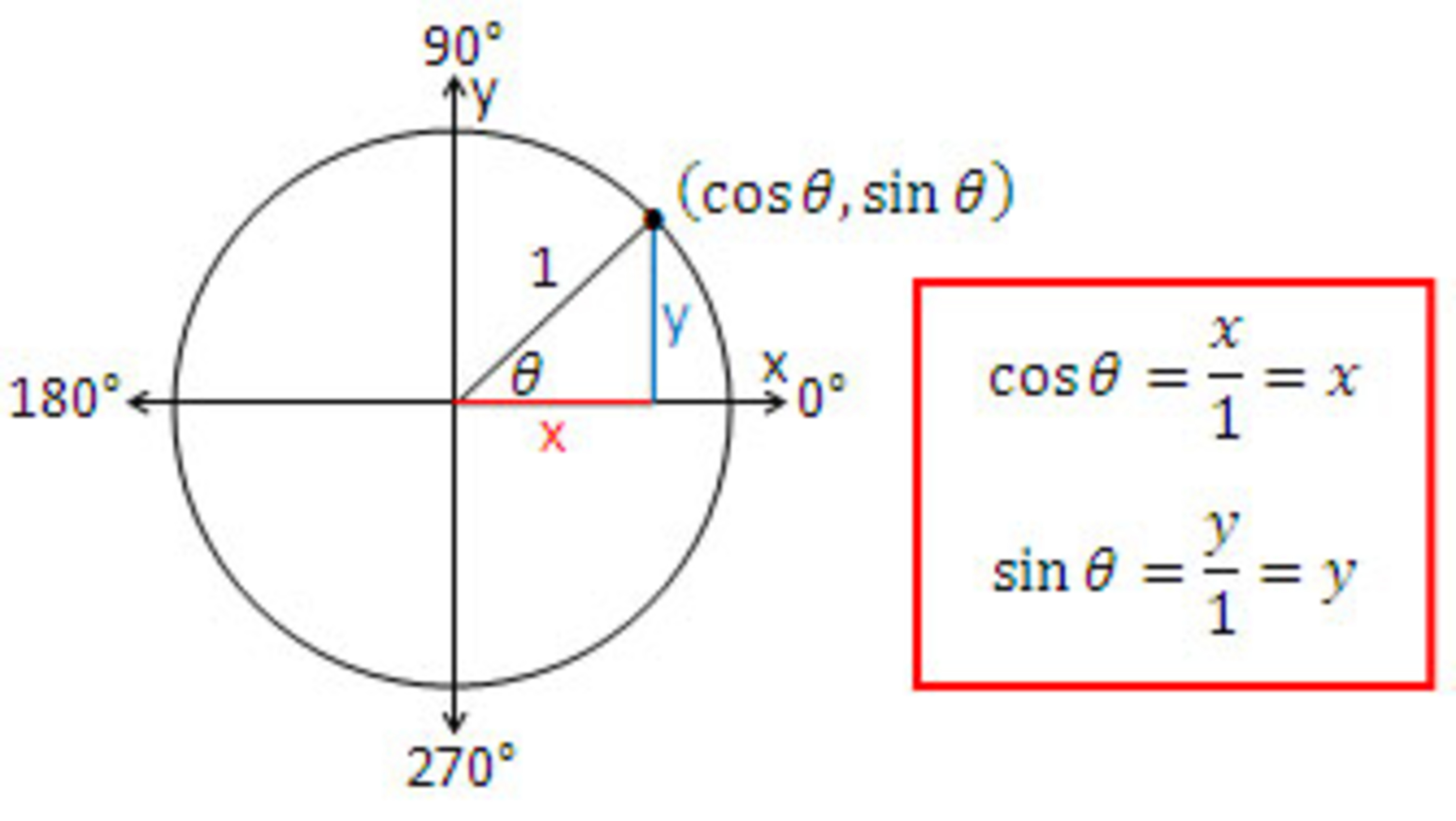Trigonometry: The Unit Circle

This post is part of a series of posts on Trigonometry. To see all the posts, click on the tag #TrigonometryTutorials below. This is the post you should read before you read this.
So far we have only defined the trig functions on angles that are strictly less than 90 degrees. If you 'played' with your calculator you will notice that the calculator and calculate sines and cosines and tangents of angles larger than 90 degrees. Why does the calculator output "Math Error" when you try calculating the Tangent of 90? Why is Sine 90 degrees 1?
To answer this we need to Unit Circle. In a cartesian Co-ordinate plane, imagine a circle centred at the origin with radius 1. A line segment is drawn from the Origin to the boundaries of the circle, making an angle with the -axis. Then, you drop a perpendicular down onto the axis. Given that is between 0 degrees and 90 degrees, you basically have a normal right triangle! Let the point where the line segment intersects the circle be . The Radius of the Circle is the hypotenuse, the opposite of is and the adjacent is . Since the Hypotenuse is one, Using the Unit circle, we can redefine the trig ratios as:
Now we have defined the Trig ratios for angles larger than 90, it is the and co-ordinate readings of the circle that creates the angle.
The is why the Trig functions are also sometimes called the Circular functions, because they can be defined by the co-ordinate readings on the circle
The Next post in this series is here
Easy Math Editor
This discussion board is a place to discuss our Daily Challenges and the math and science related to those challenges. Explanations are more than just a solution — they should explain the steps and thinking strategies that you used to obtain the solution. Comments should further the discussion of math and science.
When posting on Brilliant:
*italics*or_italics_**bold**or__bold__paragraph 1
paragraph 2
[example link](https://brilliant.org)> This is a quote# I indented these lines # 4 spaces, and now they show # up as a code block. print "hello world"\(...\)or\[...\]to ensure proper formatting.2 \times 32^{34}a_{i-1}\frac{2}{3}\sqrt{2}\sum_{i=1}^3\sin \theta\boxed{123}Comments
There are no comments in this discussion.